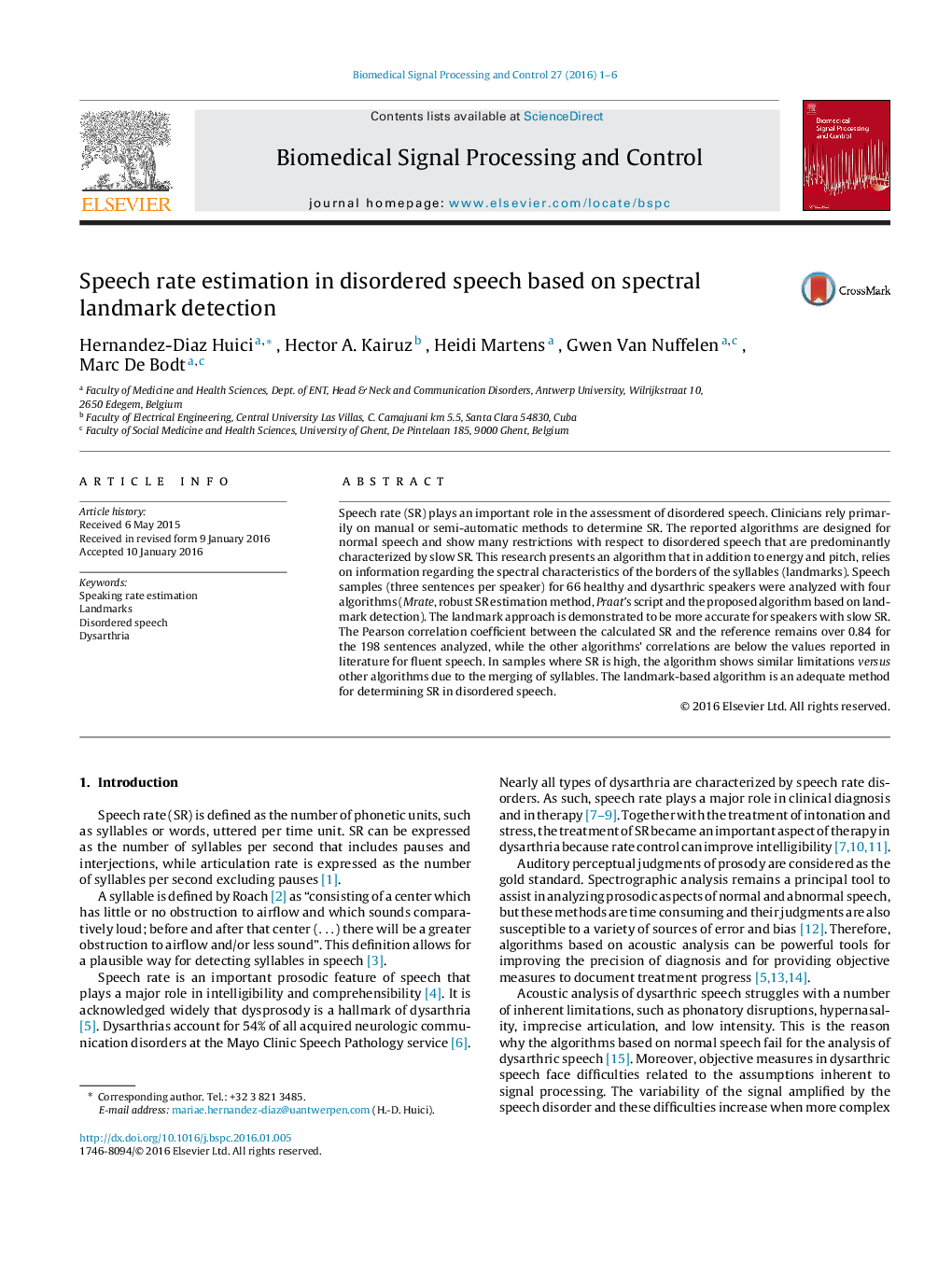| Article ID | Journal | Published Year | Pages | File Type |
|---|---|---|---|---|
| 6951217 | Biomedical Signal Processing and Control | 2016 | 6 Pages |
Abstract
Speech rate (SR) plays an important role in the assessment of disordered speech. Clinicians rely primarily on manual or semi-automatic methods to determine SR. The reported algorithms are designed for normal speech and show many restrictions with respect to disordered speech that are predominantly characterized by slow SR. This research presents an algorithm that in addition to energy and pitch, relies on information regarding the spectral characteristics of the borders of the syllables (landmarks). Speech samples (three sentences per speaker) for 66 healthy and dysarthric speakers were analyzed with four algorithms (Mrate, robust SR estimation method, Praat's script and the proposed algorithm based on landmark detection). The landmark approach is demonstrated to be more accurate for speakers with slow SR. The Pearson correlation coefficient between the calculated SR and the reference remains over 0.84 for the 198 sentences analyzed, while the other algorithms' correlations are below the values reported in literature for fluent speech. In samples where SR is high, the algorithm shows similar limitations versus other algorithms due to the merging of syllables. The landmark-based algorithm is an adequate method for determining SR in disordered speech.
Keywords
Related Topics
Physical Sciences and Engineering
Computer Science
Signal Processing
Authors
Hernandez-Diaz Huici, Hector A. Kairuz, Heidi Martens, Gwen Van Nuffelen, Marc De Bodt,
